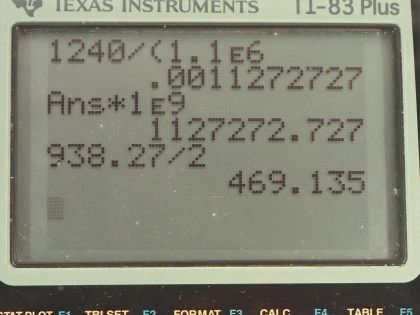Question
The peak intensity of the CMBR occurs at a wavelength of 1.1 mm. (a) What is the energy in eV of a 1.1-mm photon? (b) There are approximately photons for each massive particle in deep space. Calculate the energy of such photons. (c) If the average massive particle in space has a mass half that of a proton, what energy would be created by converting its mass to energy? (d) Does this imply that space is “matter dominated”? Explain briefly.
Final Answer
- Space is matter dominated since the energy accounted for by matter is greater than that of photons by a factor of ~500.
Solution video
OpenStax College Physics for AP® Courses, Chapter 34, Problem 14 (Problems & Exercises)

vote with a rating of
votes with an average rating of
.
Calculator Screenshots
Video Transcript
This is College Physics Answers with Shaun Dychko. The peak intensity of the cosmic microwave background radiation occurs at a wavelength of 1.1 millimeters and we are asked to figure out the energy of that photon. So we have Planck's constant times speed of light divided by the wavelength is the energy and hc can be written as 1240 electron volt nanometers, which means we have to convert the length of this photon—this wavelength— into nanometers so we multiply 1.1 nanometers by 10 to the 6 or 1.1 millimeters by 10 to the 6 nanometers per millimeter, this works out to 1.1 times 10 to the minus 3 electron volts. Part (b) says there are approximately 10 to the 9 photons for every particle that has rest mass. So what is the total energy of all the photons representative of a massive particle. So there's 10 to the 9 photons per particle times 1.1 times 10 to the minus 3 electron volts per photon and we get 1 megaelectron volt of photon energy for every particle. And the energy of a single representative particle is half the energy of a proton and that's about 5 times 10 to the 2 megaelectron volts and the question in part (d) is asking is space matter dominated or not? And the answer is yes, it is because there are 500 megaelectron volts of energy accounted for among massive particles for every 1 megaelectron volt accounted for with photon energy.
